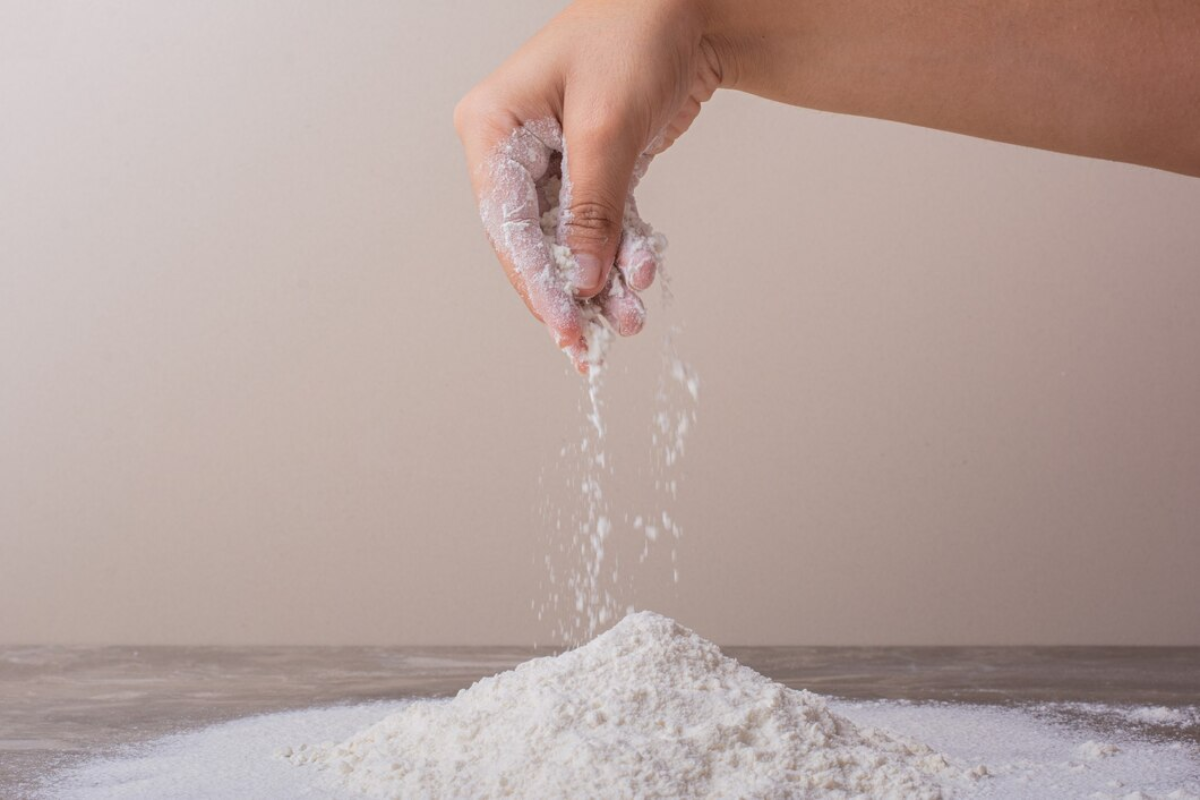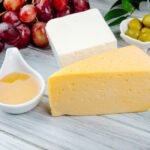If you’ve ever reached for powdered sugar and realized you’re all out, you’re not alone. Luckily, learning how to make powdered sugar at home is quick, easy, and surprisingly satisfying. With just one ingredient and a kitchen appliance, you can create a soft, fluffy sugar that works perfectly in frostings, glazes, and desserts.
This guide walks you through everything you need — tools, ingredients, and steps — while also helping you avoid common mistakes. By the end, you’ll be able to confidently whip up your own powdered sugar in minutes.
What Is Powdered Sugar and Why It Matters?
Powdered sugar, also known as confectioners’ sugar or icing sugar, is simply regular granulated sugar that’s been ground into a fine powder. It’s often used to sweeten and thicken frosting, dust over baked goods, or blend into whipped cream. Unlike regular sugar, powdered sugar dissolves quickly and has a smooth, silky feel — which is what makes it so valuable in baking.
In store-bought versions, you’ll usually find a small amount of cornstarch added. This helps prevent clumping and keeps the sugar light and dry. When you make it at home, you can choose whether or not to include cornstarch, depending on how you plan to use it.
Ingredients and Tools You’ll Need
Making powdered sugar at home is about as low-effort as it gets — but a few details can make all the difference in the final texture.
All you really need is:
- Granulated sugar (any kind will technically work)
- A blender, spice grinder, or food processor
Optional but helpful:
- Cornstarch, if you’re planning to store the sugar or want a drier texture
There’s no need to buy anything fancy. If you already have a kitchen appliance that can blend dry ingredients into a fine powder, you’re good to go.
Choosing the Right Sugar Base
Not all sugar is created equal, especially when it comes to grinding it into powder. While plain white granulated sugar is the most common choice, there are a few variations to consider.
Cane sugar and beet sugar both work well. The difference in flavor is minimal once powdered. However, if you’re using raw or organic sugars — which tend to be coarser — you may need to blend longer. These sugars can also have a slight tan color, which might carry over into your final product.
Keep in mind that brown sugar is not ideal for this. Because of its moisture content and molasses, it tends to clump rather than fluff. Stick with dry, white sugars for best results.
Optional Add-Ins: When and Why to Use Cornstarch
Cornstarch might seem like an unnecessary step, but it can be useful in specific situations. If you’re making powdered sugar to use immediately in a glaze or frosting, you can skip it. But if you’re storing it for future use, cornstarch helps absorb moisture and prevents clumps.
It also keeps the texture smooth — especially important in buttercream or royal icing, where lumps can ruin the finish.
Typically, about one tablespoon of cornstarch per cup of sugar is enough. You can also use alternatives like arrowroot powder, but cornstarch is the most traditional and widely available option.
Step-by-Step: How to Make Powdered Sugar?
Now let’s break down how to make powdered sugar the simple way. The process takes only a few minutes.
Start by adding your sugar to the blender or food processor. Don’t fill it all the way up — blending works better in small batches, so the blades can break everything down evenly. Blend on high until the sugar turns into a fine powder.
Depending on your appliance, this might take 30 seconds to 2 minutes. You’ll notice a cloud of sugar dust forming, so make sure the lid is on tight.
If you’re adding cornstarch, include it before you start blending. This allows it to mix evenly with the sugar.
Once you’re done, let the powder settle for a few seconds before opening the lid. This avoids the puff of sugar that can fly into your face — and your kitchen.
Using a Blender vs. Food Processor
Both blenders and food processors work, but they have their strengths and weaknesses.
A high-speed blender (like a Nutribullet or Vitamix) tends to give the finest, smoothest texture. These are ideal if you’re aiming for ultra-light powdered sugar that resembles the store-bought kind.
A food processor is great for larger batches and gives you more control, but the result may be a little more grainy — though still perfectly usable for most recipes.
Spice grinders can also work for very small amounts, but they can heat up quickly and cause some clumping if you’re not careful.
How to Know When It’s Ready?
You’ll know your homemade powdered sugar is ready when it feels light and fine between your fingers. Rub a little between your thumb and forefinger — if you still feel gritty sugar crystals, it needs more blending.
The goal is a soft, flour-like texture. If you’re unsure, compare it to store-bought powdered sugar, if you have some on hand.
Color can also help. It should be bright white unless you’re using raw sugar, in which case a slight beige tint is normal.
Common Mistakes and How to Avoid Them
One of the most common issues is under-blending. If the sugar isn’t fully powdered, it won’t dissolve properly in icings or glazes. Always check the texture before using it.
Another mistake is overfilling the blender, which can lead to uneven results. Work in small batches and scrape down the sides if needed.
Some people also forget to let the sugar settle after blending. Opening the lid too soon creates a puff of fine sugar dust — messy and hard to clean.
If your sugar turns sticky or clumps immediately, it could be due to moisture in the container or high humidity. Make sure everything is dry before you begin.
Storage Tips for Long-Lasting Freshness
Once your powdered sugar is ready, store it in an airtight container. Keep it in a cool, dry place — away from steam, heat, or sunlight. This prevents moisture from getting in, which can cause clumps or even spoil the sugar over time.
If you’ve added cornstarch, it will help keep the sugar dry, but it’s still best to use it within a couple of months for the freshest results.
Label the container with the date, especially if you’re making a large batch.
Creative Ways to Use Homemade Powdered Sugar
Now that you know how to make powdered sugar, you might be wondering how to use it. The most common use is in frostings — like buttercream, cream cheese, or royal icing — where a smooth texture is key.
It’s also perfect for dusting on top of brownies, pancakes, or waffles. A light sprinkle gives any dessert a more polished look.
For drinks, powdered sugar dissolves faster than regular sugar, making it a great option for lemonade, cocktails, or whipped cream.
Some people even use it to create quick glazes for cookies or donuts by mixing it with milk or lemon juice.
Conclusion
Making powdered sugar at home is one of those kitchen tricks that’s simple, practical, and kind of fun. You don’t need any special skills or equipment — just a blender, sugar, and a few minutes of your time.
Now that you know how to make powdered sugar from scratch, you’ll never feel stuck when a recipe calls for it and your cupboard is empty. Whether you’re baking for a birthday or just adding the finishing touch to pancakes, homemade powdered sugar is a fast and reliable solution.
FAQs
1. Can I make powdered sugar without a blender?
Yes, you can use a mortar and pestle or spice grinder, though it may take longer and the texture might not be as fine.
2. Is it okay to skip cornstarch in powdered sugar?
Absolutely. Cornstarch is optional. It mainly helps with moisture control and long-term storage.
3. What’s the best sugar to use for a smoother texture?
White granulated sugar gives the smoothest result. Organic or raw sugars may leave a slightly gritty feel.
4. How long does homemade powdered sugar stay fresh?
If stored properly in an airtight container, it can last several months. Just check for clumping or moisture before use.
My name is Mustafa, and I have been blogging for over 5 years. I am passionate about sharing complete, accurate, and helpful information with my readers. Along with managing content on The Matcha Read, I also contribute blog posts to premium websites. My goal is to provide valuable insights in a clear and easy-to-understand way, so every reader walks away with useful knowledge.










